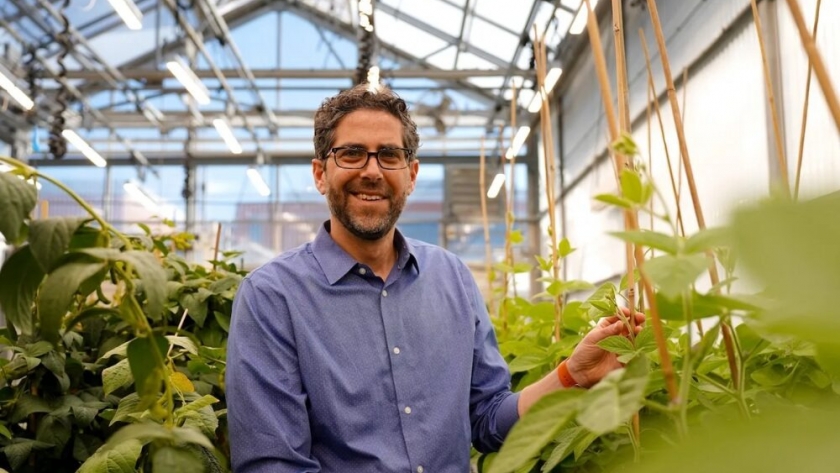
By Agroempresario.com
Spearhead Bio, the newest spinout from Danforth Technology Company (DTC), has officially launched with a bold mission: to overcome one of the biggest limitations in CRISPR-based gene editing. Spearhead Bio’s core innovation, a platform known as TAHITI (Transposase-Assisted Homology-Independent Targeted Insertion), introduces a method for precise and efficient gene insertion—something traditional CRISPR struggles to achieve on its own.
DTC, a subsidiary of the Donald Danforth Plant Science Center in St. Louis, Missouri, revealed the new company earlier this week. According to DTC, TAHITI has “clear value in improving the efficiency and speed” of plant gene editing, offering both transgenic and non-transgenic applications.
CRISPR, often referred to as genetic “scissors,” excels at cutting DNA to remove or deactivate genes. But when it comes to inserting new genes into specific locations in a genome, the process becomes significantly more complex. That’s where TAHITI comes in.
“CRISPR is excellent for cutting, but terrible at pasting,” explains Keith Slotkin, founder and Chief Scientific Officer of Spearhead Bio and the inventor of TAHITI. “If you have a desirable trait, it needs to go in a particular location. Random insertions risk disrupting other genes and creating unexpected consequences.”
TAHITI addresses this challenge by allowing gene insertion into a precise location in the genome. It leverages a biological mechanism found in nature—transposable elements, often called “jumping genes”—but in a controlled, targeted way. Whereas these elements typically move randomly and slowly over evolutionary time, TAHITI enables their movement to be directed and accelerated.
“This is using the plant’s own machinery to achieve what would otherwise take thousands of years,” says Slotkin. “It’s a controlled form of a natural process.”
The implications are significant. TAHITI could make it easier to develop crops with improved traits—such as disease resistance, pest tolerance, or increased yields—and accelerate their path to commercialization. In this way, TAHITI acts not as a competitor to CRISPR, but as its powerful complement.

TAHITI represents the culmination of years of research by Slotkin, a plant biologist and genome scientist who previously spent nine years at Ohio State University before joining the Danforth Center.
“My decision to leave academia was driven by the desire to work more closely with real-world applications,” Slotkin says. “Ohio State wasn’t against commercialization—they just weren’t well-versed in it. At Danforth, I found the support and ecosystem to turn a discovery into a company.”
Tom Laurita, CEO of DTC and now also CEO of Spearhead Bio, has worked with Slotkin for several years. He describes Slotkin as “a principled, entrepreneurial researcher,” and says the decision to spin out Spearhead Bio was driven by thorough due diligence on the technology, intellectual property, market potential, and regulatory landscape.
“This technology is solving a real problem,” Laurita asserts. “The lack of targeted gene insertion has been a major, if not the primary, obstacle to realizing the full promise of CRISPR in plant science. TAHITI unlocks that next level.”
In Laurita’s words, TAHITI might be “the most impactful new technology to emerge from the Danforth Center.”
Spearhead Bio has already secured funding commitments from a variety of strategic investors, including Rovaq Ventures, St. Louis BioGenerator, Hjelle Consulting Group, and Alta Grow Consulting.
The company has also assembled a high-profile advisory board featuring leading voices in plant biotech: Larry Gilbertson (former head of biotechnology at Bayer/Monsanto), Jon Lightner (former VP of biotechnology at Pioneer Hi-Bred International), and Jerry Hjelle (President of Hjelle Advisors), among others.
While Spearhead Bio is still refining the technology, early results are promising. “We’ve done the most work with soybean,” Slotkin says. “It’s a tangible, high-value market that lets us validate the system.”
However, TAHITI’s potential extends far beyond soy. The team is actively exploring applications in cassava, cowpea, and even horticultural crops.
“We’re so new that we’re testing all models,” Slotkin explains. “This is a crop- and trait-agnostic platform. We don’t care what kind of crop it is or what gene needs to go in—we care about getting it into the right place, every time.”
In an era where climate resilience and food security are global imperatives, precision tools like TAHITI can dramatically enhance how agriculture responds to emerging challenges. From engineering plants that use water more efficiently to enhancing nutrient profiles or disease resistance, the ability to reliably insert genes without collateral damage is a game-changer.
More than just a tool, TAHITI represents a shift in how scientists and companies might approach crop design. By streamlining what was once the most cumbersome part of gene editing, Spearhead Bio is helping usher in a new chapter in plant biotechnology—one where precision, speed, and safety can coexist.
And with experienced leadership, proven science, and the backing of both public and private sector partners, Spearhead Bio appears well-positioned to make a significant impact in agricultural innovation.
